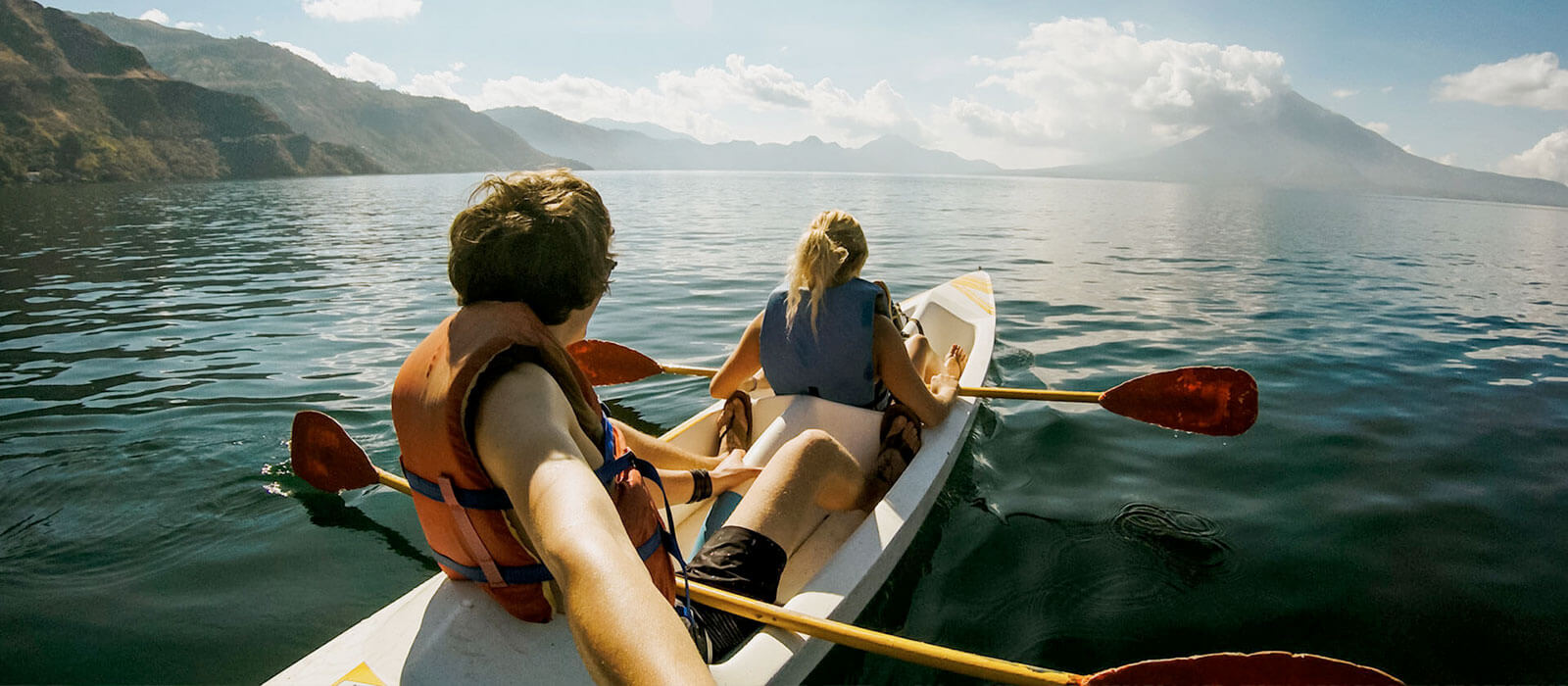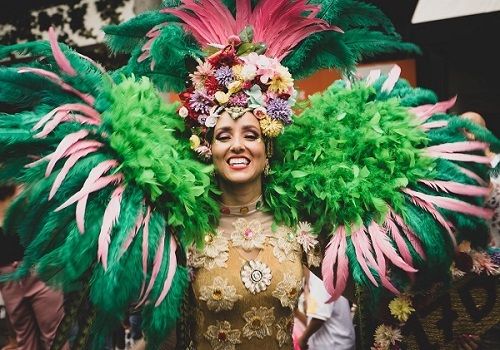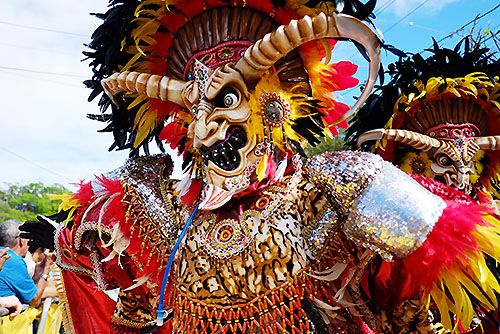Most beautiful beaches in Spain | donQuijote

Summer is here and with it the long-awaited vacations. There are many who choose the beach to spend their long-awaited days of rest, that's why in this article you will find 10 most beautiful beaches in Spain.
Come and learn Spanish in Spain while you enjoy a day at the beach, the sun and a refreshing drink with your friends, partner or family. Because if there is one thing Spain is known for, it is its beautiful beaches and its summer atmosphere.
Stay and read this article in English or switch to the Spanish version here.
Playa de las Catedrales
The beach of Las Catedrales is in Ribadeo, in the Autonomous Community of Galicia. With its impressive cliffs and rock formations, this beach is one of the most photographed in Spain.
It looks like something out of a Hollywood movie, but no, you can find it in Spain and stroll along its shore or contemplate the beauty of its arches up to 30 meters high. Of course, it is only possible to enter the caves that guard the arches at low tide.
Castro de Baroña
This beach is reached by a dirt path in La Coruña, Galicia. And although the beach of Castro de Baroña does not have the basic services of the most crowded beaches, you can enjoy a fine white sand, a somewhat cool water and an incredible calm.
Cala Varques
Now we travel to the Balearic Islands, specifically to Mallorca, to find Cala Varques. A quiet and hidden Mallorcan cove, with crystal clear waters and surrounded by cliffs, ideal for those looking for a more remote place.
Cala Mondragó
Cala Mondragó is part of a protected natural park. In addition, this cove offers calm waters and a stunning natural environment in Mallorca. And, best of all, it is one of the least saturated beaches on the island (for the moment).
Playa de Es Trenc
Known for its extensive white sandy beach and crystal-clear waters, Es Trenc beach is one of the most famous beaches in Mallorca.
Cala Agulla
Also in Mallorca, a wide beach with clear waters and white sand you will find Cala Agulla. Located in a protected natural environment, you will enjoy its crystal-clear waters with the feeling of being in the Caribbean.
Playa de Ses Illetes
Also in the Balearic Islands, but changing to the island of Formentera, you will find the beach of Ses Illetes. Famous for its white sand and crystal-clear waters, it is ideal for swimming and enjoying the sun, but you will always find people there.
Stroll along its shore, discover a unique beauty and a unique natural landscape or practice some water sports.
Cala Saladeta
And on another Spanish island, you will find Cala Saladeta. In Ibiza there are thousands of coves, but this one is small, with turquoise waters and enviable white sand, especially because it is surrounded by pine trees. It is accessible by natural trails that you will love and where you can see boats anchored in the surroundings.
Cala Pola
In the province of Girona, near Tossa de Mar, you will find a cove in the Costa Brava with a natural beauty. With coarse golden sand, crystal clear and calm waters, it is an ideal place to spend the day with family or friends.
Playa de Oyambre
Between San Vicente de la Barquera and Comillas, in Cantabria, you can find the beach of Oyambre. With two kilometers of white sand and a field of dunes, this Cantabrian landscape is unbeatable. It is also one of the ideal beaches for surfing in the Cantabrian Sea.
Have you ever wanted to visit one of the most beautiful beaches in Spain? Don't hesitate any longer and sign up for a Spanish course in Spain with donQuijote to discover these and many more beaches that make up the country.

 <svg xmlns="http://www.w3.org/2000/svg" width="46" height="62" viewBox="0 0 46 62"><metadata><?xpacket begin="" id="W5M0MpCehiHzreSzNTczkc9d"?><x:xmpmeta xmlns:x="adobe:ns:meta/" x:xmptk="Adobe XMP Core 5.6-c138 79.159824, 2016/09/14-01:09:01"><rdf:RDF xmlns:rdf="http://www.w3.org/1999/02/22-rdf-syntax-ns#"><rdf:Description rdf:about=""/></rdf:RDF></x:xmpmeta><?xpacket end="w"?></metadata><defs><style> .cls-1 { fill: #d2283d; fill-rule: evenodd; }</style></defs><path id="Forma_1" data-name="Forma 1" class="cls-1" d="M1349.41,1143.7l10.45,4.46,3.21-7.69-10.46-4.46Zm10.98-2.13-1.61,3.88-6.7-2.86,1.62-3.87Zm-5.81-23.84c0,2.32,1.35,4.14,3.06,4.14s3.07-1.82,3.07-4.14a5.364,5.364,0,0,0-.41-2.06h0.41a1.035,1.035,0,0,0,0-2.07h-25.55a1.035,1.035,0,0,0,0,2.07h19.83A5.364,5.364,0,0,0,1354.58,1117.73Zm4.09,0c0,1.26-.61,2.07-1.03,2.07s-1.02-.81-1.02-2.07,0.61-2.06,1.02-2.06S1358.67,1116.47,1358.67,1117.73Zm10.22,7.24h-1.02v-12.55a5,5,0,0,0-4.97-5.02h-9.34v-6.2h1.02a3.1,3.1,0,0,0,0-6.2h-12.27a3.1,3.1,0,0,0,0,6.2h1.02v6.2h-10.36a5,5,0,0,0-4.97,5.02v36.46a5.01,5.01,0,0,0,3.07,4.63v0.72a2.764,2.764,0,0,0,2.74,2.77h5.76a2.764,2.764,0,0,0,2.74-2.77v-0.33h11.25v0.32a2.766,2.766,0,0,0,2.74,2.78h5.76a2.766,2.766,0,0,0,2.74-2.78v-0.71a5.01,5.01,0,0,0,3.07-4.63V1135.3h1.02A5.165,5.165,0,0,0,1368.89,1124.97Zm-23.51-25.84v-2.06h2.04v2.06h-2.04Zm4.09-2.06h2.04v2.06h-2.04v-2.06Zm6.13,1.03a1.026,1.026,0,0,1-1.02,1.03h-1.02v-2.06h1.02A1.026,1.026,0,0,1,1355.6,1098.1Zm-14.31,0a1.026,1.026,0,0,1,1.02-1.03h1.02v2.06h-1.02A1.026,1.026,0,0,1,1341.29,1098.1Zm4.09,3.1h6.13v6.2h-6.13v-6.2Zm-5.11,53.02a0.7,0.7,0,0,1-.7.71h-5.76a0.7,0.7,0,0,1-.7-0.71v-0.32h7.16v0.32Zm22.49,0a0.7,0.7,0,0,1-.7.71h-5.76a0.7,0.7,0,0,1-.7-0.71v-0.32h7.16v0.32Zm3.06-5.34a2.936,2.936,0,0,1-2.92,2.95h-29.93a2.938,2.938,0,0,1-2.93-2.95v-36.46a2.938,2.938,0,0,1,2.93-2.95h29.93a2.936,2.936,0,0,1,2.92,2.95v36.46Zm3.07-15.65h-1.02v-6.2h1.02A3.1,3.1,0,0,1,1368.89,1133.23Z" transform="translate(-1328 -1095)"/></svg>
<svg xmlns="http://www.w3.org/2000/svg" width="46" height="62" viewBox="0 0 46 62"><metadata><?xpacket begin="" id="W5M0MpCehiHzreSzNTczkc9d"?><x:xmpmeta xmlns:x="adobe:ns:meta/" x:xmptk="Adobe XMP Core 5.6-c138 79.159824, 2016/09/14-01:09:01"><rdf:RDF xmlns:rdf="http://www.w3.org/1999/02/22-rdf-syntax-ns#"><rdf:Description rdf:about=""/></rdf:RDF></x:xmpmeta><?xpacket end="w"?></metadata><defs><style> .cls-1 { fill: #d2283d; fill-rule: evenodd; }</style></defs><path id="Forma_1" data-name="Forma 1" class="cls-1" d="M1349.41,1143.7l10.45,4.46,3.21-7.69-10.46-4.46Zm10.98-2.13-1.61,3.88-6.7-2.86,1.62-3.87Zm-5.81-23.84c0,2.32,1.35,4.14,3.06,4.14s3.07-1.82,3.07-4.14a5.364,5.364,0,0,0-.41-2.06h0.41a1.035,1.035,0,0,0,0-2.07h-25.55a1.035,1.035,0,0,0,0,2.07h19.83A5.364,5.364,0,0,0,1354.58,1117.73Zm4.09,0c0,1.26-.61,2.07-1.03,2.07s-1.02-.81-1.02-2.07,0.61-2.06,1.02-2.06S1358.67,1116.47,1358.67,1117.73Zm10.22,7.24h-1.02v-12.55a5,5,0,0,0-4.97-5.02h-9.34v-6.2h1.02a3.1,3.1,0,0,0,0-6.2h-12.27a3.1,3.1,0,0,0,0,6.2h1.02v6.2h-10.36a5,5,0,0,0-4.97,5.02v36.46a5.01,5.01,0,0,0,3.07,4.63v0.72a2.764,2.764,0,0,0,2.74,2.77h5.76a2.764,2.764,0,0,0,2.74-2.77v-0.33h11.25v0.32a2.766,2.766,0,0,0,2.74,2.78h5.76a2.766,2.766,0,0,0,2.74-2.78v-0.71a5.01,5.01,0,0,0,3.07-4.63V1135.3h1.02A5.165,5.165,0,0,0,1368.89,1124.97Zm-23.51-25.84v-2.06h2.04v2.06h-2.04Zm4.09-2.06h2.04v2.06h-2.04v-2.06Zm6.13,1.03a1.026,1.026,0,0,1-1.02,1.03h-1.02v-2.06h1.02A1.026,1.026,0,0,1,1355.6,1098.1Zm-14.31,0a1.026,1.026,0,0,1,1.02-1.03h1.02v2.06h-1.02A1.026,1.026,0,0,1,1341.29,1098.1Zm4.09,3.1h6.13v6.2h-6.13v-6.2Zm-5.11,53.02a0.7,0.7,0,0,1-.7.71h-5.76a0.7,0.7,0,0,1-.7-0.71v-0.32h7.16v0.32Zm22.49,0a0.7,0.7,0,0,1-.7.71h-5.76a0.7,0.7,0,0,1-.7-0.71v-0.32h7.16v0.32Zm3.06-5.34a2.936,2.936,0,0,1-2.92,2.95h-29.93a2.938,2.938,0,0,1-2.93-2.95v-36.46a2.938,2.938,0,0,1,2.93-2.95h29.93a2.936,2.936,0,0,1,2.92,2.95v36.46Zm3.07-15.65h-1.02v-6.2h1.02A3.1,3.1,0,0,1,1368.89,1133.23Z" transform="translate(-1328 -1095)"/></svg>







